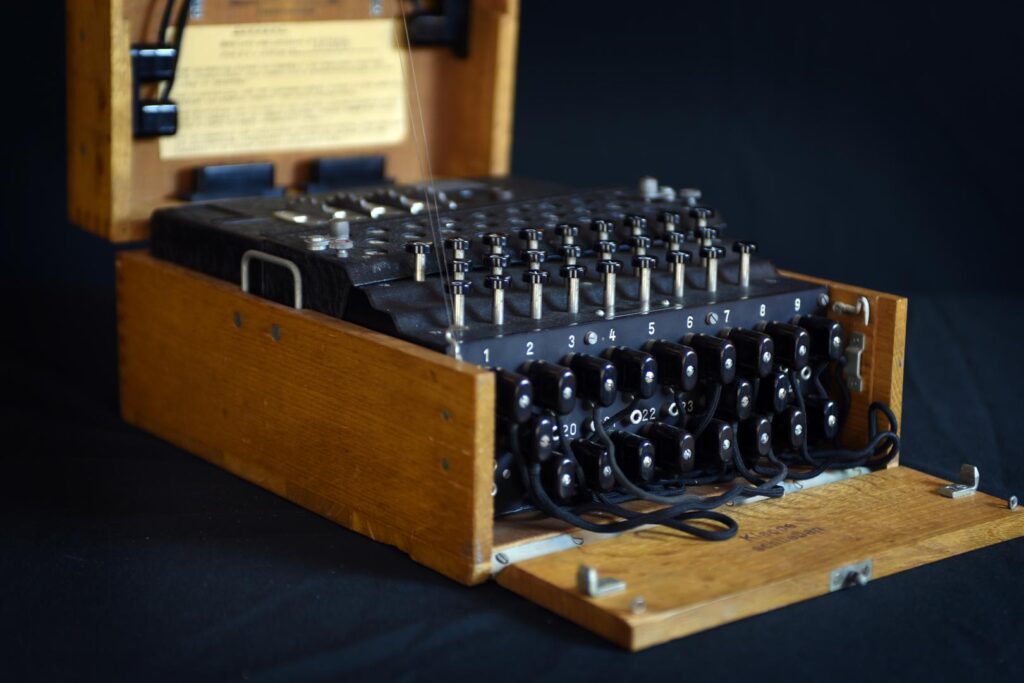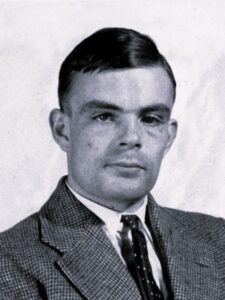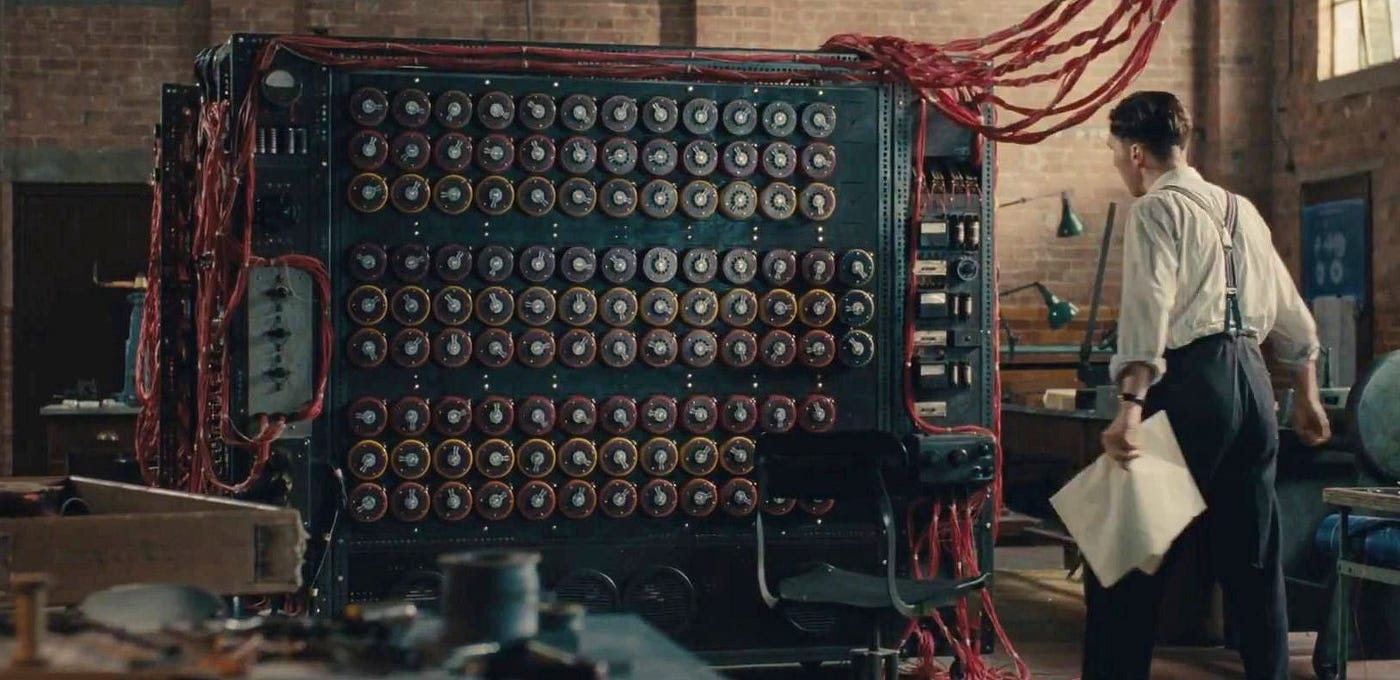Alan Turing, a pioneer in the development of modern computing, was born on June 23, 1912, in London to English parents, Ethel Sara Turing and Julius Mathison.
Despite struggling with the humanities, he excelled in mathematics from a young age and received a scholarship to study mathematics at King’s College, University of Cambridge. Turing was fascinated by Von Neumann’s research on how mathematics could describe the statistical probabilities of events at a subatomic level, rather than following deterministic laws.
He was driven by the idea that indeterminacy at the smallest atomic level could differentiate humans from machines and explain free will. He also contributed to the construction of the Turing machine and the definition of a modern computer, emphasizing that it should be digital, binary, electronic, and general-purpose. Additionally, Turing made significant contributions during World War II by breaking up the Enigma cryptographic method.
How did Turing break the Enigma?
One of the most significant events in Alan Turing’s life was his involvement in decoding the Enigma cipher during World War II (1939–1945). Before joining the project to crack the machine created by the German Arthur Scherbius, Turing was already fascinated by logic games like chess and had a strong interest in cryptology.
He had been working with encryption machines since late 1937 and had even built the initial stages of a machine that encoded letters into binary numbers. This machine produced a huge number of combinations, like an almost impossible safe to open. With the war underway, Turing focused efforts on serving the British government and was assigned to His Majesty’s Government School of Cryptography.
Decrypting messages was a complex task that required expertise in cryptography and new ideas. At that time, mathematicians were not part of the team working on the Enigma project, which mainly consisted of linguists. When progress was slow, some mathematicians were recruited, and Turing was one of the recruits.


Several teams were working on the project, and although Turing was known for his solitary nature, he was able to collaborate effectively when necessary. This was when he became familiar with the Enigma, a portable machine equipped with electrical circuits and mechanical rotors that encrypted military messages.
The Enigma used a cipher that performed a character permutation every time the initial key was pressed, activating the electrical circuits and reflectors. The mechanical rotors functioned like a car’s odometer, encoding messages by rotating in sequence.
As the Germans strengthened the Enigma to make it even more secure, the British began to lose hope of deciphering its messages. However, Turing’s team started developing a more sophisticated machine called “The Bomb.”
The electromechanical bomb combined technology and human insight to find vulnerabilities in the encoding process, such as the impossibility of replacing a letter with itself and the tendency to include common phrases in messages, like the phrase “Heil Hitler!”
Turing’s bomb was crucial in decrypting messages that revealed war secrets, such as the location of German submarines that were attacking British supply convoys. In addition to the two bombs built, which successfully deciphered 178 German messages, Turing’s work laid the groundwork for more advanced projects, like the Colossus.
His electromechanical bomb was a significant advancement in cryptography and had a profound impact on history, even though it may not be considered a general-purpose computer due to its reliance on relays and rotors instead of electronic circuits.
Turing’s machine and the imitation game
In 1937, an article introduced the Turing Machine, which was described as a machine with an infinitely long piece of paper tape to write and read symbols and numbers.
Turing’s concept of the Turing machine significantly impacted the development of general-purpose computers and artificial intelligence.
During his time at Bletchley Park in 1943, Turing met Claude Shannon, who demonstrated the feasibility of performing Boolean algebra using electronic circuits.
Both Turing and Shannon shared an interest in understanding the secrets of the human brain. They believed that machines could solve mathematical problems and even imitate our intelligence by answering logical questions based on binary instructions.
Turing, like Ada Lovelace, questioned whether machines could think and learn, ideas seen as unconventional at the time. These reflections influenced the “intelligence” of machines based on new computers with stored programs.
What is the Turing test, and how is it conducted?
The Imitation Game tests a machine’s ability to imitate or reproduce human thinking. Generally, the operation of the game is relatively simple.
There is a questionnaire that should be given to a person and a machine. Finally, based on the responses, we can determine which one is from humans and which is from machines. If the judge cannot figure it out, we can say that the machine has passed the test. The idea is not to “get it right,” but to come as close as possible to responses that a human could formulate.
In a way, The Imitation Game could establish parameters not only for working with machine intelligence but perhaps also for identifying the workings of human thought.

Turing spent little time with his family because he was away from school and boarding schools for most of his education. When he was only one year old, his parents went back to India, so he was brought up by his brother John and his wife in a coastal town in England. Turing attended Sherborne boarding school, where he developed a close relationship with Christopher, who was later referenced as the “electromechanical bomb” in the movie “The Imitation Game.”
Turing’s Endpoint
Unfortunately, this story does not have a happy ending. In 1954, Alan Turing was convicted of maintaining a relationship with someone of the same sex. He had to choose his punishment: prison or hormonal treatment equivalent to chemical castration. The man of logic was ostracized by the intolerance of the time simply for not hiding his sexuality.
After 60 years, the Queen of England granted a royal pardon to Turing. This gesture came too late for him, as he undoubtedly would have contributed much more to science and would have lived to see his achievements in history.
In 2014 a movie about Turing’s life and research was released: “The Imitation Game”, available on Amazon Prime, Netflix, and Youtube






